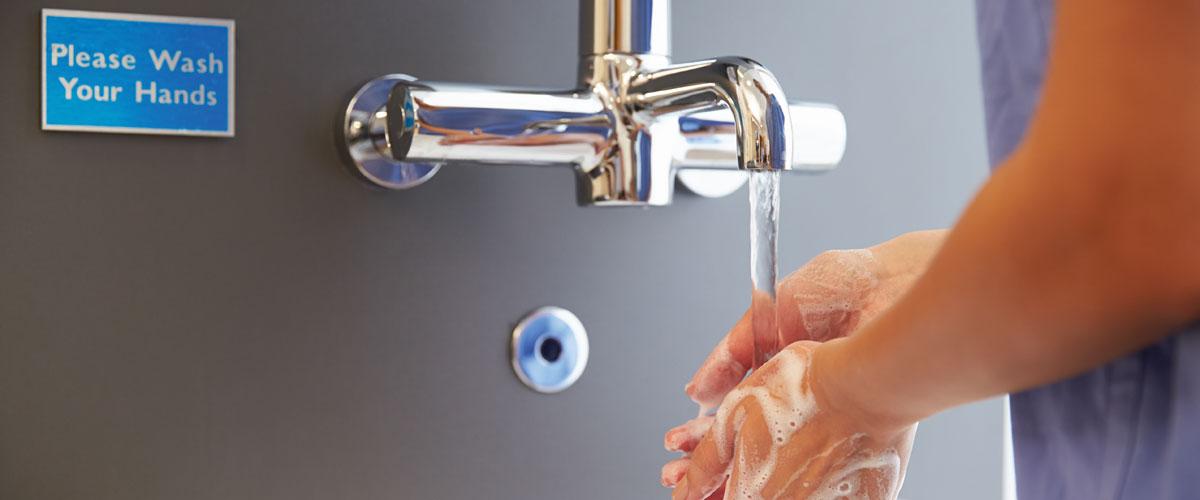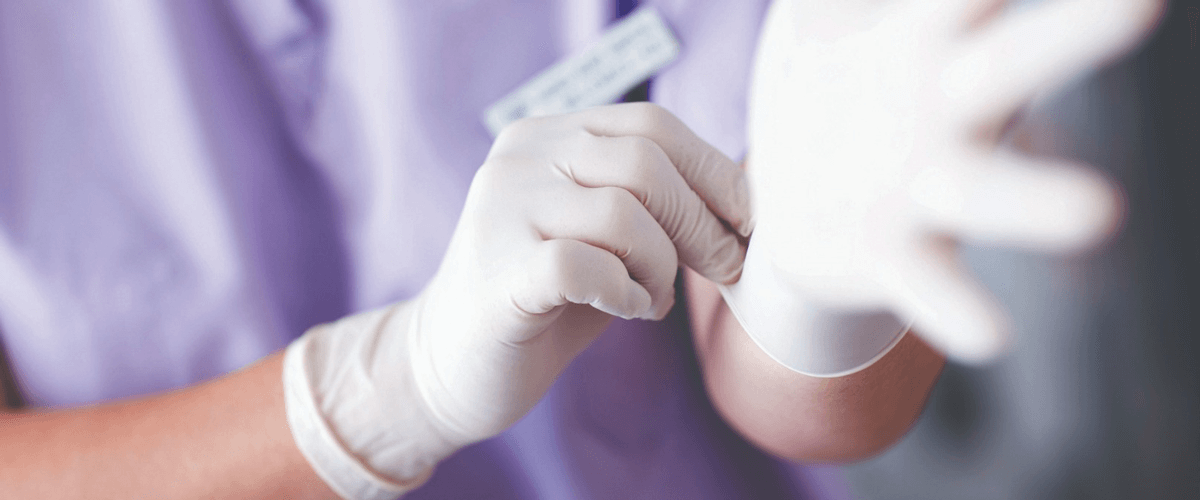In recent times, healthcare-associated infections (HCAIs) and the role of hand hygiene in their occurrence have received increased attention. HCAIs, which are infections that a patient or healthcare professional contracts while receiving or providing healthcare respectively, can range from minor to fatal. And, according to the European Centre of Disease Control, some 8.9 million HCAIs develop on a yearly basis in European hospitals and long-term care facilities. Moreover, more than half of these infections are considered preventable,1 thereby, making risk management a priority.
Consequences of healthcare-associated infections
HCAIs can have widespread and severe consequences. These consequences do not only concern patients, but also healthcare providers and the healthcare industry as a whole. The following four points are some of the main consequences for those affected:
- Extended hospital stays: Contracting an HCAI can have detrimental effects on the health of the affected patient. This could potentially lead to longer in-hospital care, which not only affects the patient economically, but also psychologically.
- Higher healthcare costs: Extended hospital stays, and the additional necessary treatments that come along with an HCAI, will increase the costs of healthcare for both patients and healthcare institutions. For example, the annual cost of HCAIs is an estimated €7 billion per year in Europe, covering only direct costs.2 In fact, HCAIs account for nearly 16 million days of additional hospital stays per year.3
- Loss of income: When a patient contracts an HCAI, which requires extended care in a hospital, that person could be at risk of experiencing a loss of income, as they are unable to go to work for a longer time than expected. The results could also be circular; a loss of income could affect the patient’s ability to cover care-associated costs (depending on the healthcare system).
- Fatalities: The worst-case outcome of contracting an infection in a healthcare setting is having a patient die as a result. The OECD has determined that approximately 37,000 deaths can be attributed to HCAIs each year.2 And, considering many of these are preventable, so too are the resulting deaths.
Factoring glove benefits in the prevention of HCAIs
Hand hygiene awareness, performing the approved hand hygiene routine, and using personal protective equipment (PPE) correctly are crucial to preventing HCAIs. However, these, on their own, do not always prevent cross-contamination and/or the onset of infections. Instead, these three practices below, which can help to minimise the risk of cross-contamination, should be integrated into the culture of healthcare environments:
- Efficient glove packaging: This feature makes it easier to dispense gloves, which can potentially prevent healthcare professionals from extracting extra gloves that they end up pocketing. This is a cross-contamination hazard as pocketed gloves are likely be used later.
- Skin-friendly glove ranges: Gloves classified as such not only help prevent healthcare professionals’ skin problems, but also soothe their skins. Problems such as irritant or allergic contact dermatitis can have adverse effects on compliance with hand hygiene protocols. The struggle to comply with these protocols due to skin discomfort is a cross-contamination hazard in and of itself. In fact, this can increase the chance for HCAIs to develop. Fortunately, when using skin-friendly options, clinicians can nourish their skin while treating, minimising or, best-case scenario, preventing skin issues.
- Glove quality: This is especially crucial for hygiene and infection control. The metric used to measure the chance of finding pinholes in gloves is the acceptable quality limit (AQL). The industry standard for examination gloves is an AQL of 1.5. However, the lower the AQL level, the lower the chance of finding pinholes in a glove. A reduction from an AQL of 1.5 to, let us say, 1.0, reduces the chances of finding pinholes in gloves by up to 30 per cent.
How can Medline help you break the chain of infection?
Medline is highly committed to minimising the spread and risk of healthcare-associated infections in healthcare facilities. Through our proven quality (e.g. our range of nitrile gloves has an AQL of 1.0) and innovative solutions, we add value for all our customers. Specifically, we help ensure they can execute their job in the safest way possible while contributing to interventions that improve hand hygiene compliance in patient care. Examples of our premium offerings include:
- SensiCare Free accelerator-free gloves
- Restore Sense colloidal oatmeal-coated gloves
- Packaging solutions, such as MicroStop™ film (for reducing overuse/waste and preventing pocketing) and flat-layer packaging (for more product in one box)
- Hand sanitisers and soaps


Jeanne Verheyden
Exam Gloves Division, Medline Europe
Jeanne is a recent graduate from Vrije Universiteit Amsterdam, and received her Master’s degree right before joining Medline Europe as a Junior Product Manager. Her educational background is in international business and business administration, and during her studies she completed internships in Germany and the United Kingdom.
References:
1. ECDC. (2018, November 15). Publications & Data. Retrieved from European Antibiotic Awareness Day: https://antibiotic.ecdc.europa.eu/en/publications-data/healthcare-associated-infections-threat-patient-safety-europe
2. European Centre for Disease Prevention and Control. (2008). Annual Epidemiological Report on Communicable Diseases in Europe 2008. Stockholm: European Centre for Disease Prevention and Control.
3. World Health Organization. (2021). Healthcare-Associated Infections, Fact Sheet. Geneva: World Health Organization.



